It happens to most of us. You think that you have figured out the perfect lawn care plan, and then one day, you start noticing yellowing grass on your beautiful green lawn. The yellowing grass might appear in patches, large swaths, or all over your lawn at once. Seeing yellow spots or patches of yellow grass in a lush green lawn can be pretty depressing for the dedicated gardeners or the passionate lawn owners among us. In this article I’ll share with you my grass turning yellow fix.

Did you know? Dog urine can also cause the grass blades to turn yellow.
And you are not alone, if you have also found yourself asking the question, “Why is my lawn turning yellow?”. Most people suddenly assume that it is the lawn diseases that result in a yellow lawn. However, it is not always the case. Many other things can cause the green grass to turn yellow. For instance, it could be fungal diseases such as snow mold or too much nitrogen in the soil because of over-fertilization.
However, do not worry. We have got you covered! In this article, we will tell you what you can do about the things that can turn the grass yellow in your lawn. We will also talk about some of the things that will help you keep your lawn green and your grass healthy. Happy Reading!
Common Reasons Why Your Lawn Is Turning Yellow
No matter what grass you grow, whether Bermuda grass or St. Augustine grass, there’s always a chance it might turn yellow. However, if you understand the reasons that can turn perfectly healthy grass into a pile of yellow and dead grass, you will be better able to deal with the issue on your own. Also, by better understanding the things that can turn grass yellow, you can come up with a better lawn care plan to keep your grass green. In this section, we will look at some of the most common reasons behind the appearance of yellow grass in lawns, gardens, and other turf areas.
Overwatering
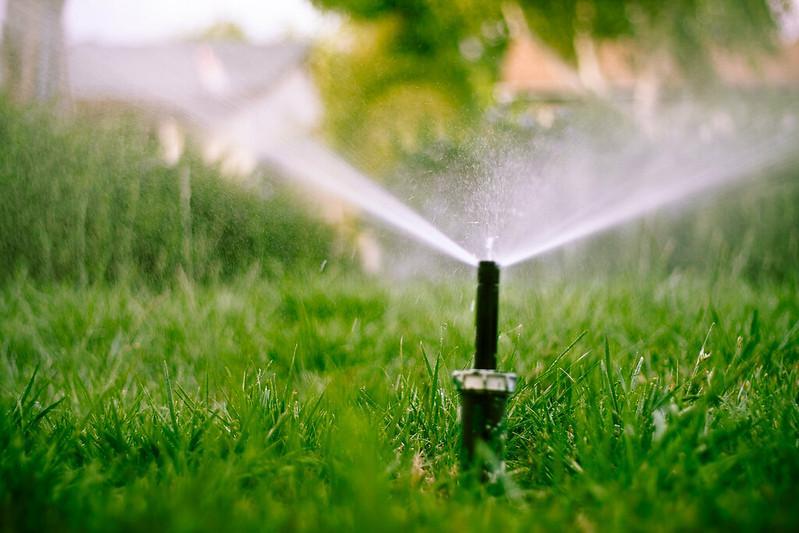
Too much water, just like too little water, can also harm the grass.
Grass roots develop poorly when the soil is overwatered, and when the grass roots develop poorly, it can cause a wide range of problems for the lawn. For example, overwatered lawns tend to have yellow grass as waterlogged soil does not allow oxygen and other nutrients to penetrate deep into the ground. When combined with poorly developed roots, this can cause nutrient deficiency of many kinds, some of which could result in chlorosis -yellowing of the leaf blades.
Expert gardeners and lawn owners suggest that you should water your lawn, especially the new grass, deeply and less frequently. It ensures that the grass develops a deeper root system, making it more resilient to drought stress, nutrient deficiency, and other common lawn problems. The same can also be applied to new sod.
If you water your lawn using an irrigation system, make sure that it is working correctly and there are not any issues with the water supply and drainage. Like too much water that can wash off nutrients from the soil, leaving grass malnourished, uneven irrigation can also be problematic. It can result in some areas of lawns receiving too little water, which would cause the grass there to wilt, turn yellow and die.
You should only water the grass in an established lawn when the topsoil appears dry. When watering, water the lawn deeply, one or two times per week, rather than watering grass every day and superficially. Also, some grass varieties are more prone to water damage than others. For instance, St. Augustine grass can even turn yellow during heavy rainfall when the soil becomes waterlogged.
Nevertheless, look for the following signs to determine whether or not your lawn is overwatered:
- Root rot
- Yellow grass blades
- Wilting grass
- Lawn fungus
- Muddy spots
- Water runoff
- Excessive thatch
- Presence of weeds and bugs in unusual numbers
Nutrient deficiency & Under or Over-Fertilization
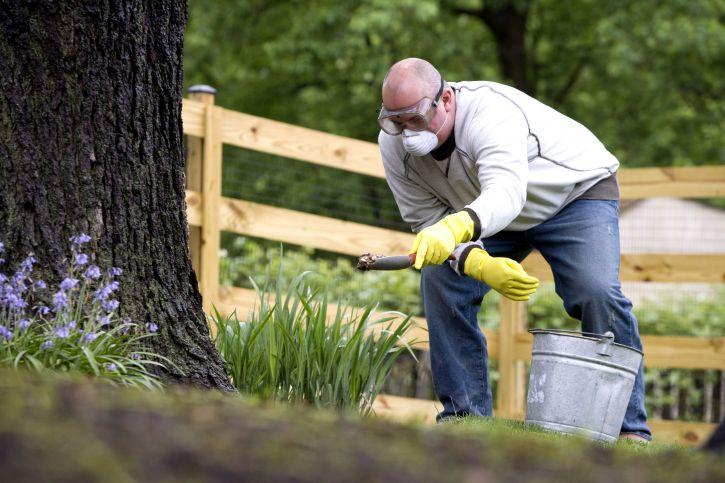
Too much fertilizer, just like excess water, can also harm the grass.
Both under-fertilization and overfertilization can be detrimental to lawns. Like water, too much or too little fertilizer can also turn your lawn yellow. For instance, if you notice yellow grass over your whole lawn, it is most likely due to a nitrogen deficiency. The issue can be fixed simply by adding nitrogen fertilizer to the soil. However, if you notice yellow grass spread in the form of yellow spots on your lawn, it is most likely an iron deficiency. An adequately fertilized grass is a simple fix for this issue as well.
Excess nitrogen can also be problematic for the lawn. Excess nitrogen salts decrease the ability of grass roots to take up other nutrients, which could result in another plethora of problems for the lawn. Also, excess nitrogen is the primary reason for fertilizer burn in most lawns. The wilting grass from fertilizer burn can also quickly die if excess nitrogen salts are not removed from the soil.
Such problems can be avoided by using a slow-release fertilizer. It will not saturate the grass with nutrients and also will not cause any fertilizer burns. However, fertilizer requirements might vary from one place to another depending on the soil. Therefore, we strongly recommend getting a soil test before fertilizing your lawn. A nutrient-poor soil needs more fertilization; however, ensure that you remove excess fertilizer from the soil surface.
RELATED: St. Augustine Grass Vs. Bermuda Grass: What’s The Difference And Which Is Better?
Animal Urine
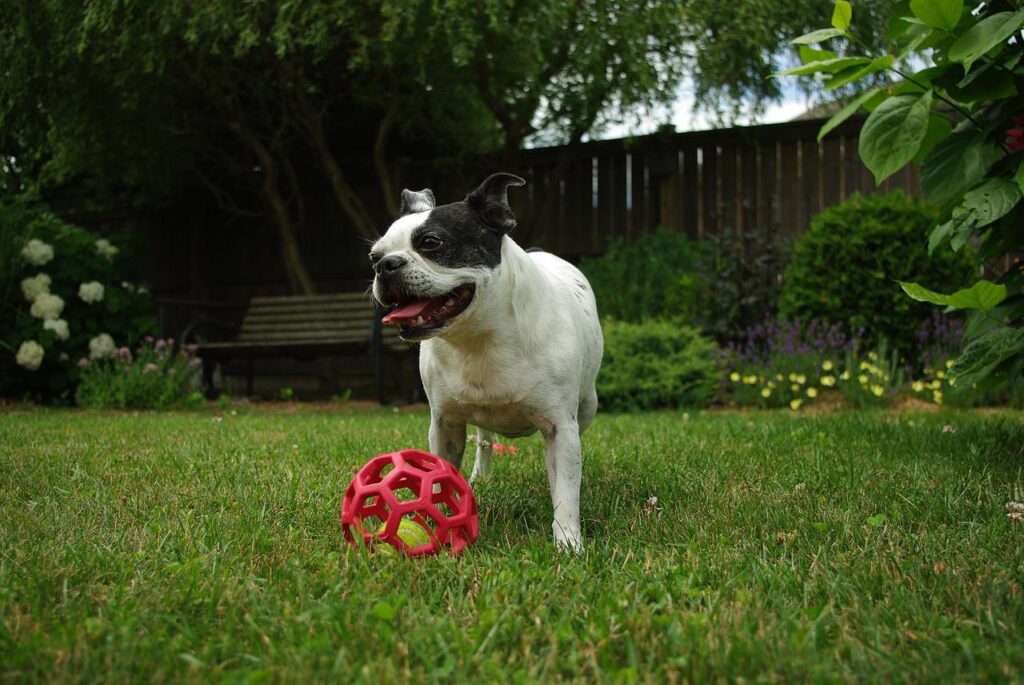
Treating your lawn with a urine neutralizer soon after a dog pees on it can also help you keep your grass green.
Animal urine can also turn the grass yellow for the same reason that over-fertilization of a lawn makes the grass turn yellow. For instance, dog urine or, in some cases, even dog feces has a high concentration of nitrogen which could burn the grass. The dog urine can also mess up with the soil pH, which could, in some cases, affect the grass negatively.
Dogs often pee in the same spots every day, and finding dog urine spots is not tricky. The urine spots have yellow grass bordered with greener grass. It is because the concentrated center parts of the urine spots burn the grass blades while at the edges, urine is diluted, which acts as lawn food, keeping the grass blades green.
The best way to tackle this problem is to use a dog urine neutralizer. However, you need to apply the neutralizer immediately after the dog is done peeing on the grass. The urine spots might not grow back if you take too long before applying the neutralizer.
Lawn diseases
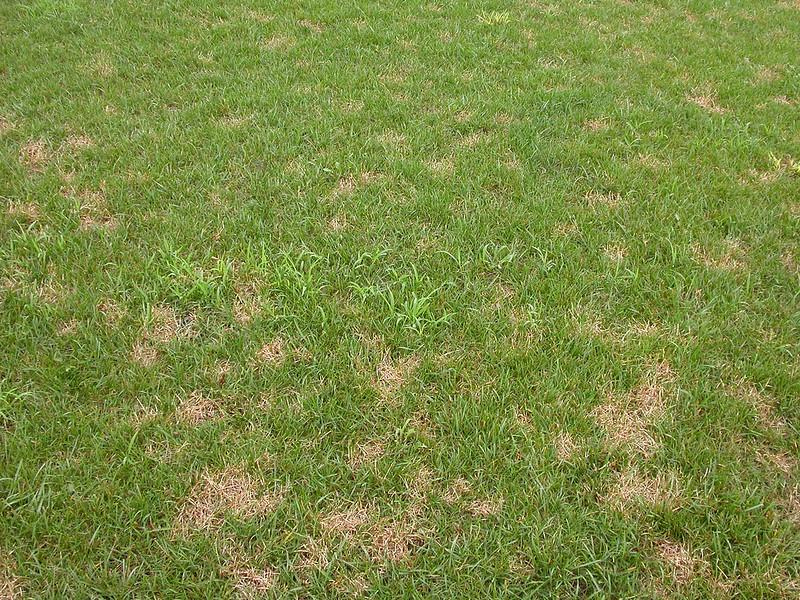
Dollar spot: a fungal disease in which dollar-sized yellow spots appear on the lawn.
Most lawn diseases are caused by fungi such as fairy rings, snow mold, dollar spot, etc. Sometimes, in fungal infections, the grass shows signs of nutrient deficiency. You might also see a coating of a black or white powdery substance on grass blades in addition to the leaf blades turning yellow. Fungal diseases usually attack the grass when there is too much moisture.
There can be several reasons for excess moisture in your lawn. These include watering too late in the evening and too much thatch or overwatering. The best way to prevent and avoid lawn diseases is to implement proper lawn care. Proper lawn care includes regular mowing, adequate watering, and dethatching of the lawn from time to time.
If you have a recurring lawn disease problem, you can also try using fungicides on your lawn in spring or early summer. However, fungicide will only make the problem go away and not treat the underlying reason behind the disease itself. You will have to ensure proper lawn maintenance if you do not want the infection to come back.
Heat Stress & Shade
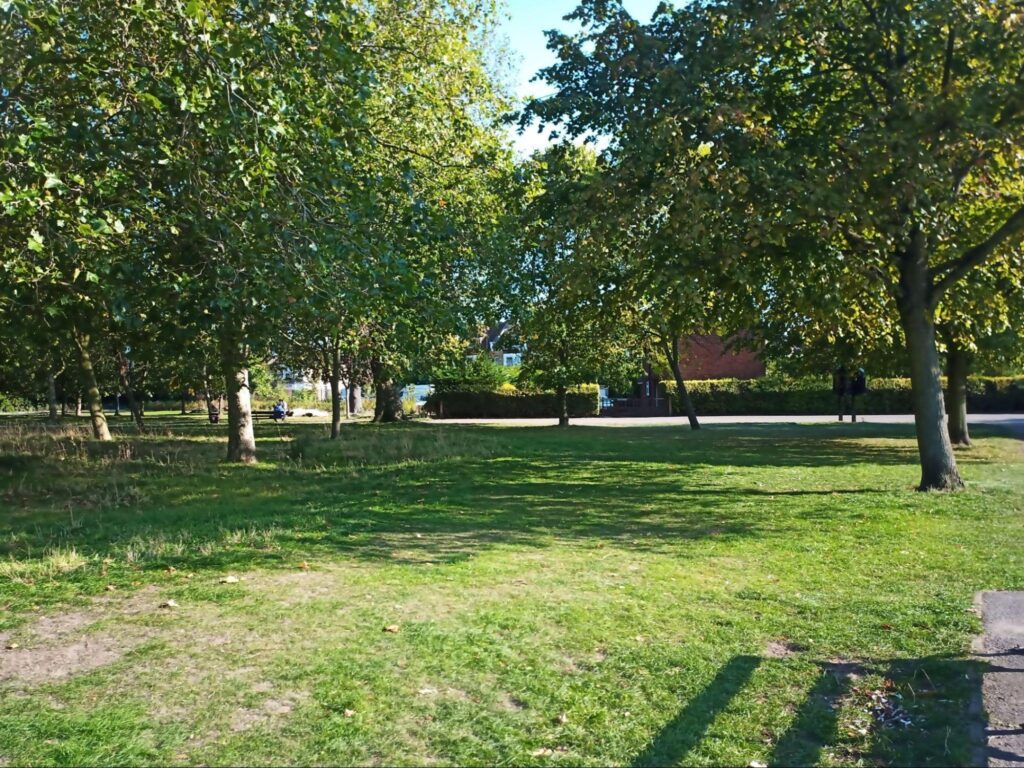
If the grass under your favorite tree turns yellow, it is probably because it is not getting enough sun.
Most grass species grow best in full sun or direct sunlight. If there is dappled sunlight on your lawn or your lawn is near a large building or tree, the grass underneath the tree’s or building’s shade might turn yellow. This way, you not only end up with a pale yellow lawn, but the chances of your lawn falling victim to fungal disease also increase. It is because the moisture in shady places is usually higher, and fungi thrives in moist shady areas.
Similarly, some varieties of grass are very prone to drought stress. For instance, St. Augustine grass is not very drought resistant. If not adequately watered, it can easily show signs of stress, i.e., wilting and yellowing. In addition, grass exposed to heat or full sun all day long can also show signs of heat stress. Again, it is because water evaporates quickly in places with hot sunny weather, leaving the grass dry and dehydrated.Drought or heat stress can be especially damaging to a newly established lawn or new sod as the grass plants have not yet fully formed a root system and cannot absorb enough moisture from the soil on their own.
A Faulty Mower
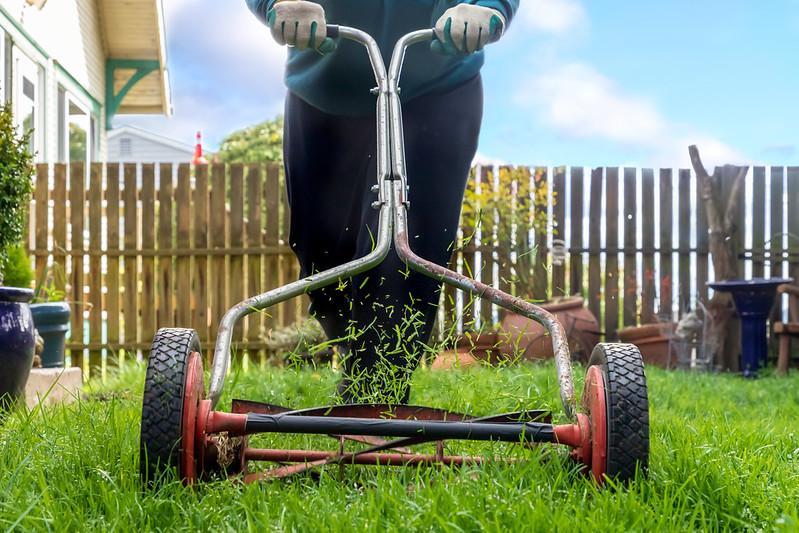
Sharp mower blades can also reduce the chances of your grass turning yellow.
If you notice that your lawn appears yellow after mowing, you might need to fix your mower blades. Dull and blunt blades cannot properly cut a grass blade, leaving it prone to infection, which could ultimately cause the grass to turn yellow. Also, you should not mow your grass when it is wet. Mowing wet grass can make the grass clippings stick to the mower blades, which could in turn, create an uneven cutting of the grass.
The best way to solve this issue is by getting your mower blades professionally sharpened. You can also buy new mower blades as they are not something quite expensive. You can also try sharpening the blades at home. However, most lawn owners usually do not feel comfortable doing that and prefer buying new gear for lawn maintenance.
Also, if you want to remove yellow grass caused by a previous mowing session, you can do so by setting the mowing height a bit lower. It will trim the yellow leaf blades right off your lawn and make way for the new healthy and green blades of grass moving forward. However, be careful when mowing your grass too close to the surface of the ground. Scalping your lawn is as damaging for the grass as a rough cut.
Pest Issues
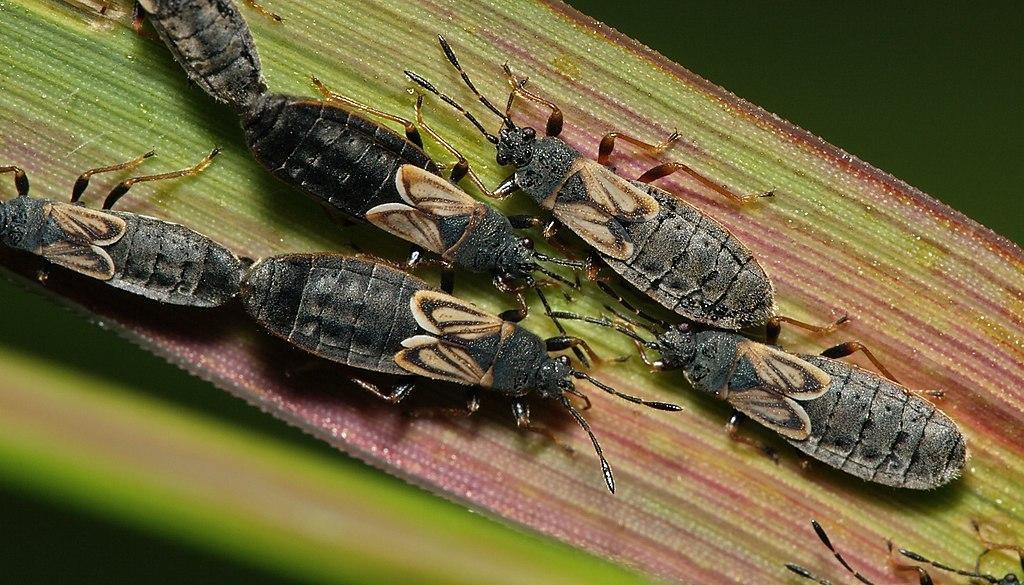
The presence of chinch bugs can also cause the grass on your lawn to turn yellow.
Sometimes it is not improper lawn maintenance or lawn diseases but a pest problem that is behind the grass in your lawn turning yellow. It is usually hard to identify the pests that are causing the grass to turn yellow. However, if the grass turns yellow because of a pest, the issue will not go away until the pest is removed.
Nonetheless, look for tiny holes, egg sacs, or powdery and fuzzy coatings on grass that lawn pests may have created. Some pests might even be lurking beneath the soil. They feed on grass roots, leaving the grass plants malnourished and weak.
You can simply dig up small portions of the turf from different spots in your lawn to see if any pests are living beneath the soil surface. If not, you can easily replace the turf by planting new grass there. However, if there are any pests, you can then move on towards dealing with the pest issue.
Soil Compaction
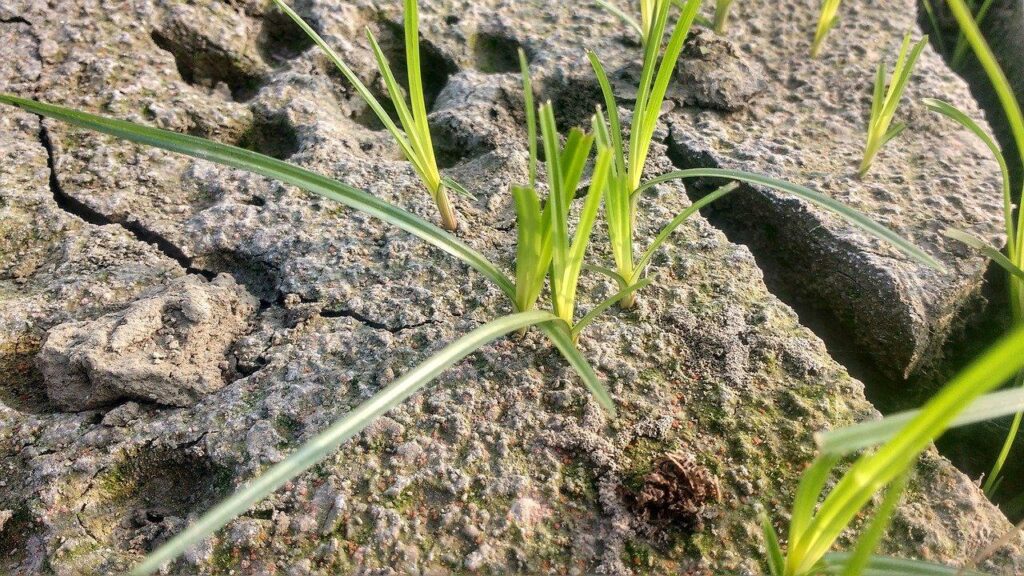
Aerating your soil properly can also reduce the chances of grass turning yellow.
Compaction of lawn soil can also cause a plethora of problems for your yard, including the grass turning yellow. This is because compaction decreases the pore spaces between the soil particles. It can result in reduced penetration of air, water, and nutrients to the deeper layers of soil. As a result, the grass growing in compacted soil cannot obtain enough nutrients or water that is needed for healthy growth and might appear pale or yellow.
Fixing compacted soil is a relatively easy job. You can easily rent a soil aerator or ask a professional to aerate the soil for yourself. Also, do not use a lawn mower on the same spots during each use. It can also lead to the compaction of soil in certain parts of your lawn.
Lawn Dormancy
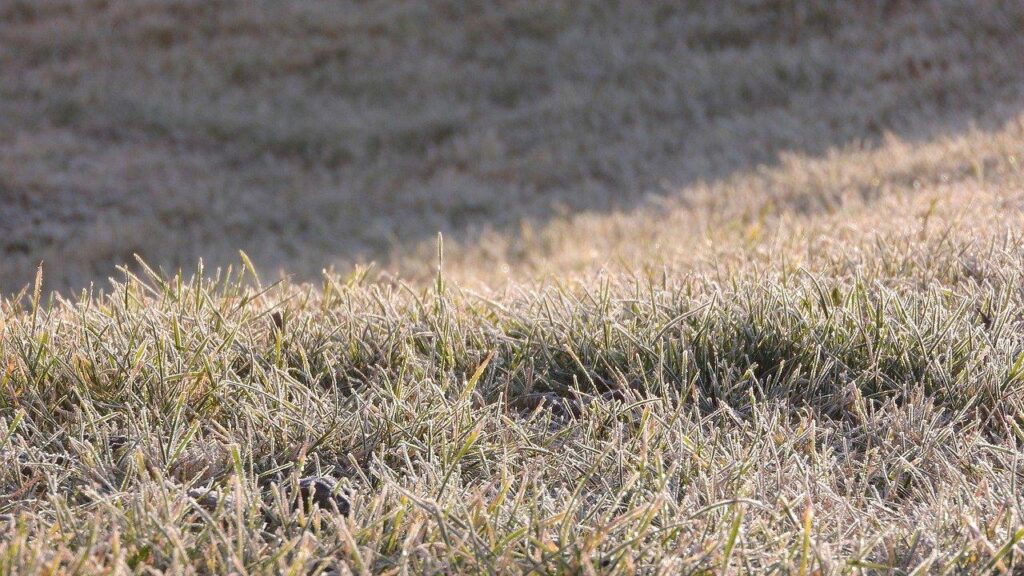
Dormant grass also appears yellow or pale brown.
Another reason why the grass on your lawn might start to turn yellow is the dormancy of grass. Lawn dormancy is a phenomenon in which grass enters a state of biological sleep. This helps the grass avoid the adverse effects of harsh environmental conditions such as drought, cold, or heat stress.
However, you should not leave your grass on its own during dormancy. Keep mowing the grass at regular intervals during this time and remove any weeds you see on your lawn. In addition to that, also water your lawn from time to time. All these things will help shorten the dormancy period, and soon, your grass will bounce back.
Fixing Yellow Grass
The first thing you need to do while fixing a yellowing lawn is to figure out the exact underlying problem behind the yellowing of the lawn grass. Once you have done that, you can move on to the fixing part. Nonetheless, here are some of the ways you can try fixing a yellow lawn:
1. Water deep
As already stated, deep watering can ensure that the grass roots develop a deeper base. It will minimize the negative effect of drought stress and make your lawn more resilient to drying and hot weather. Different varieties of grasses have different water requirements. Water requirements will also change with the season and weather. Nonetheless, here is a general guideline on how much water should be provided to various common types of turf grass:
| Turfgrass | Water requirements per week |
| Bermuda grass | 1¼ inches |
| Buffalo grass | 0.3 inches |
| Kentucky bluegrass | 1.2 inches |
| Perennial ryegrass | 6 inches |
| St. Augustine grass | 1 inch |
| Tall fescue | 0.8 inches |
| Zoysia | 1 inch |
2. Proper Fertilization
Proper fertilization is just as crucial for healthy grass growth as adequate watering. Adding too much or too little fertilizer can create all sorts of problems for the lawn. So, make sure that you flush out excess fertilizer from the surface of the lawn, or it may cause chemical burns, turning your grass yellow and pale. Also, it is better if you use a slow-release fertilizer on your lawn.
You can apply the fertilizer two to three times a month. However, we strongly recommend getting a soil test before using any fertilizer on your lawn. A soil test can tell you loads about soil health and what fertilizers need to be added to your lawn in order to promote healthy grass growth.
3. Use Urine Neutralizer
If you have pets in your home, it is also best to keep a urine neutralizer for your lawn. Animal urine, especially dog urine, has a high concentration of nitrogen. Animal urine can thus burn grass, turning the grass yellow. It is better to apply the neutralizer as soon as your pet pees. The longer you wait, the less the chances are that the grass in that region will grow back.
4. Get Rid of Pest and Lawn Diseases
Fungal diseases and pests such as grubs can damage grass roots, leaving the grass weak and pale. We suggest you monitor your lawn regularly for any pests or diseases. The sooner you catch the problem, the easier it will be for you to treat your lawn. Depending on the situation, you can also use pesticides or fungicides on your lawn. However, do your research before applying a chemical compound to your lawn or talk to an expert.
5. Fix Heat or Shade Stress
To grow properly, your lawn needs adequate sunlight as well as proper temperature. If any of these elements is too high or too low, it will cause the grass to become pale and yellow. Some grass types may be more tolerant to shade than others. Similarly, some grass species will have better heat tolerance than others. However, you should try your best to keep the conditions of your lawn as favorable as possible.
Frequently Asked Questions
Can yellow grass become green again?
In most cases, yes! You can quickly turn yellow grass green by providing the grass with proper growing conditions. However, in some cases, when the damage exceeds a certain limit, the grass might not even be able to grow back.
Is yellow grass dead or dormant?
Here is a simple test that you can perform to see if your grass is dormant or dead. Find a patch of yellow grass on your lawn and pull it with your hands. If the grass comes out easily, it is dead. Dead grass is not coming back, so you will need to sow new grass in your lawn.
Does yellowing grass mean too much water?
Overwatering is one of the reasons that your lawn might turn yellow. However, there are a number of other factors that could make the grass turn yellow. For instance, it could be anything from heat stress to pests and lawn diseases.
Sources For Further Reading
- What’s Wrong With My Lawn?. (2015). Retrieved 22 April 2022, from https://ag.umass.edu/turf/fact-sheets/whats-wrong-with-my-lawn
- Yard and Garden: When the Lawn Is Orange or Brown. (2022). Retrieved 22 April 2022, from https://www.extension.iastate.edu/news/yard-and-garden-when-lawn-orange-or-brown
- Lawn Disease Quick Reference. (2022). Retrieved 22 April 2022, from https://hort.extension.wisc.edu/articles/lawn-disease-quick-reference/
Now that you know about grass turning yellow fix, make sure to check out our other articles:
How to Plant Bermuda Grass | Bermuda Grass Growth Stages and Care
Shade Tolerant Grass Species | Which Species Is The Best?
How To Use a 2,4-D Lawn Weed Killer To Control Weeds? (And Is It Safe?)







